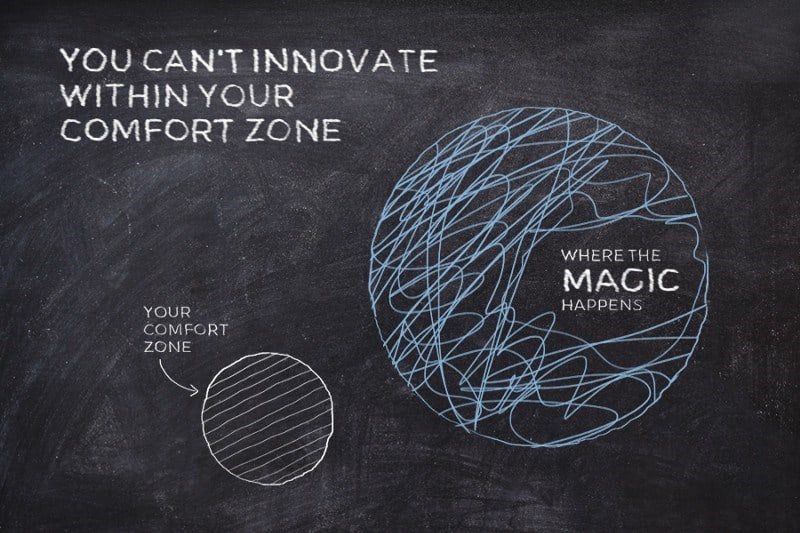Table of Contents
Leadership is a journey, a challenge, and an honor. At its core, great leadership isn’t about authority—it’s about creating an environment of trust and safety. Because when your team feels safe, they are emboldened to take risks, collaborate creatively, and truly excel. So, let’s take a deep dive into why great leaders make people feel safe and how you can become one of those leaders.
Safety: The Foundation for Experimentation
Have you ever wanted to try a new approach at work but held back, fearing criticism or failure? As a leader, it’s your job to ensure your team members never have to feel that way. Great leaders create an environment that’s safe to experiment in. They understand that innovation doesn’t come from playing it safe, but rather from taking calculated risks and trying new things. And guess what? Sometimes those new things don’t work out. But that’s okay.
At the heart of innovation, there’s an indispensable element: the courage to experiment. We all know that ‘the same old, same old’ won’t deliver new breakthroughs. Yet, the fear of failure, criticism, or judgment often curbs our willingness to try something novel. Can you recall a time when you wanted to try a different approach but held back? How did that feel?
Great leaders understand this dilemma and see it as a pivotal part of their role to counteract it. They strive to create an environment where it’s not just acceptable but encouraged to test, experiment, and explore. They make it safe to question the status quo and push boundaries.
Fostering an Innovative Environment
The formula for fostering an innovative environment is simple yet profound: People + Safety + Experimentation = Innovation. This equation begins with the individuals on your team. Their diverse perspectives and experiences are the building blocks for fresh ideas. Safety, the next element, is the catalyst that propels these ideas forward. Without a sense of safety, team members might hesitate to share their ideas out of fear—fear of criticism, misunderstanding, or failure.
As a leader, when you assure your team that they are in a safe environment, you’re saying, “I value your ideas. I appreciate your courage to think differently. And I’m here to support you, not judge you.” This encouragement fuels the engine of experimentation.
Embracing Risks and Potential Failure
A key aspect of promoting experimentation is understanding and accepting that not all attempts will succeed. Risk and failure are two sides of the coin of experimentation. But here’s the thing: failure is not the opposite of success. It’s a stepping stone towards success. You learn more from the experiments that don’t work out than from those that do because they show you what doesn’t work.
So, what happens when experiments fail? Great leaders use these moments as opportunities for learning and growth, not as occasions for criticism or punishment. They encourage their team members to share what went wrong, what they learned, and how they might approach it differently next time. This practice helps to instill resilience and continually strengthens the sense of safety, thereby nurturing an environment of learning and continual improvement.
Empowering Your Team
By fostering a safe environment for experimentation, you empower your team. When they know that it’s okay to fail, they’ll be more willing to take risks, suggest new ideas, and try different approaches. This can lead to significant breakthroughs that might never have happened in a more restrictive environment.
Ultimately, a leader’s role is to cultivate a culture of safety and experimentation that can ignite the creative potential of their team.
In this space, team members feel comfortable venturing out of their comfort zones, and that’s where real growth and breakthroughs occur.
Isn’t that what innovation is all about?

Safe to Share Ideas: Cultivating a Culture of Openness
How many times have you had an idea but were too afraid to voice it? When you’re in a safe environment, those fears dissolve. You’re free to share your thoughts and ideas without fear of humiliation or rejection. Great leaders actively encourage this kind of openness. They listen, value, and foster diversity of thought. Your unique perspective could be the spark that ignites the next big breakthrough.
The Importance of Feeling Safe
Great leaders understand that groundbreaking ideas can come from anywhere and anyone. Hence, they foster an environment where team members feel safe to share their thoughts and perspectives. This sense of safety is not about physical security; it’s about emotional and psychological comfort. It’s about creating a space where individuals feel valued and respected, where their ideas are welcomed and considered, no matter how out-of-the-box they may be.
Encouraging Openness and Dialogue
Openness is the first step towards innovation. Yet, it’s not always easy to cultivate in a workplace setting, especially if team members fear criticism or rejection. Great leaders actively encourage openness and dialogue. They do this not just by welcoming ideas, but by actively soliciting them. They create forums for discussion, feedback sessions, brainstorming meetings, or suggestion boxes. These are more than just symbolic gestures; they’re clear signals that every idea is welcome.
Embracing Diversity of Thought
Diverse teams bring a wealth of different perspectives, experiences, and insights to the table. When all members feel safe to express their views, the collective intelligence of the team is significantly enriched. This diversity of thought leads to better problem-solving and increased creativity. It helps teams to anticipate challenges, identify opportunities, and devise comprehensive solutions. Your unique perspective could indeed be the spark that ignites the next big breakthrough.
From Listening to Valuing
Good leaders listen; great leaders value. It’s one thing to hear your team members’ ideas—it’s another to genuinely value them. Valuing ideas means giving them serious consideration, providing constructive feedback, and taking action when they hold potential. When team members see their suggestions being implemented or influencing decisions, it validates their contributions and encourages continued participation.
Building Trust and Confidence
By creating a safe space for sharing ideas, great leaders also build trust and foster confidence within their teams. When team members know their thoughts and opinions are valued, they feel more confident and invested in their work. They trust their leaders more, and they trust themselves more, too.

In conclusion, fostering a culture where it’s safe to share ideas is about much more than encouraging communication.
It’s about building a vibrant, innovative, and inclusive team where everyone feels heard, valued, and empowered. It’s about nurturing an environment that unlocks the collective genius of your team. So, the next time an idea is forming in your mind, know that it has the potential to be the catalyst for change.
How will you create a safe space for it to flourish?
The Power of Vulnerability: A Leader’s Secret Strength
There’s a certain strength in being vulnerable, in admitting that you don’t know everything. It’s easy to forget that leaders are humans too, right? A great leader creates an environment where it’s safe to admit when you don’t know something, where it’s okay to ask for help. This builds trust and invites others to do the same. After all, how can we learn and grow if we pretend to know it all?
In our fast-paced, competitive world, vulnerability is often viewed as a weakness. It’s something to be avoided, hidden, or covered up. But what if we’ve been looking at it all wrong? What if vulnerability is not a weakness but a strength, especially when it comes to leadership? Let’s explore this intriguing idea.
Vulnerability: A Misunderstood Concept
To be vulnerable is to expose oneself to the possibility of being attacked or harmed, either physically or emotionally. It’s about openness, risk, and emotional exposure. But here’s where the common misunderstanding arises: vulnerability is not about weakness. It’s about courage – the courage to show up and be seen, even when there are no guarantees.
Strength in Vulnerability
There’s a certain power in admitting that we don’t know everything, in owning our mistakes, in asking for help when we need it. These actions require courage and humility. They require us to be authentic and genuine. They require us to be human.
For leaders, this human aspect is especially crucial. Leaders are often expected to be infallible, to have all the answers, to always be strong. But let’s not forget: leaders are humans, too. They don’t have all the answers, and it’s okay for them not to. Admitting that is a sign of strength and authenticity, not weakness.
Creating a Safe Environment for Vulnerability
Great leaders create an environment where it’s safe to be vulnerable. They foster a culture of trust and respect, where team members feel safe to be themselves, to express their doubts and fears, and to ask for help when they need it.
This starts with the leader. When a leader is willing to show vulnerability, it signals to the team that it’s okay for them to do the same. It builds trust and fosters a sense of connection and camaraderie within the team.
Vulnerability as a Tool for Growth
How can we grow if we’re not willing to admit that we don’t know everything? How can we learn if we’re not open to feedback and criticism? Being vulnerable allows us to acknowledge our gaps in knowledge or skills, which is the first step towards addressing them.
Vulnerability also invites others to share their expertise and insights, promoting a culture of learning and knowledge sharing. It’s a two-way street that encourages open communication and collaboration.
Trust and Connection
Ultimately, vulnerability builds trust and connection. When leaders show vulnerability, it humanizes them. It shows their team that they are not alone in their struggles, fears, or doubts. This shared vulnerability can create deep bonds of trust and respect, fostering a team culture that is supportive, collaborative, and resilient.
The power of vulnerability lies in its ability to create an environment of openness, trust, and mutual respect. It’s about being real, human, and relatable. It’s about building a team that’s not just about business, but about people.
So next time you find yourself striving to appear perfect, remember that your vulnerability may be one of your greatest strengths.
It’s not just okay to not know everything—it’s essential. And that’s the power of vulnerability.

Embracing Mistakes as Learning Opportunities: Turning Stumbles into Stepping Stones
Mistakes happen. They’re a natural part of life and work. But in an environment where people are afraid to make mistakes, they are more likely to hide them instead of learning from them. Great leaders foster an environment where mistakes aren’t feared but seen as opportunities for learning and improvement. If you’ve ever stumbled, you know how it feels. So, why not turn that experience into a stepping stone rather than a stumbling block?
The Inevitability of Mistakes
Mistakes are a natural and inevitable part of life and work. Whether it’s a minor oversight or a major blunder, no one is immune. What distinguishes great leaders, however, is their ability to view these mistakes not as failures but as valuable learning opportunities.
Fostering a No-Fear Environment
In an environment where people fear making mistakes, they are likely to spend more energy on avoiding blame than on taking risks, innovating, or learning. This fear-based mindset can stifle growth and productivity.
Great leaders understand this. They strive to create a no-fear environment where mistakes are not something to be hidden or shamed but are seen as a natural part of the learning process. When mistakes are viewed through this lens, team members are more likely to take ownership of their errors and proactively seek solutions.
Mistakes as Learning Opportunities
Every mistake holds a lesson. It provides valuable insight into what doesn’t work, and it shines a light on areas that need improvement. It challenges assumptions and pushes for innovation. It promotes resilience and adaptability.
Great leaders know how to harness the power of these lessons. They encourage their teams to dissect mistakes, to understand their causes, and to identify ways to avoid similar errors in the future. This process turns mistakes into stepping stones towards improvement and growth.
Cultivating a Growth Mindset
This approach to mistakes aligns with the growth mindset, a concept developed by psychologist Carol Dweck. According to Dweck, people with a growth mindset believe that abilities and intelligence can be developed through dedication, hard work, and, most importantly, learning from mistakes and failures.
By fostering a growth mindset within their teams, leaders can cultivate an environment where team members are motivated to take on challenges, learn new skills, and continuously improve. They turn stumbling blocks into stepping stones.
Personalizing the Experience
We’ve all made mistakes. Think about the last time you stumbled at work. How did you feel? What did you do? Now, imagine if you were in a safe environment where you could openly discuss your mistake, learn from it, and use it as a stepping stone towards improvement. How would that change your experience?
Great leaders are not just sympathetic; they empathize because they have been there too. They are not afraid to share their own mistakes and the lessons they’ve learned. This personal touch not only humanizes them, but also encourages others to do the same.
In conclusion, mistakes should not be feared or avoided but embraced as opportunities for learning and improvement. They are the stepping stones that lead to progress and innovation.
So, the next time you or your team make a mistake, don’t hide it or fear it. Embrace it. Learn from it. Grow from it. Because that’s what great leaders do.

Mistakes should not be feared or avoided but embraced as opportunities for learning and improvement. They are the stepping stones that lead to progress and innovation.
Safe to Challenge: Cultivating Constructive Criticism
Challenge doesn’t have to be a bad word. In the right environment, challenging ideas can lead to better solutions. Great leaders create spaces where team members feel safe to challenge each other’s ideas respectfully. This kind of constructive criticism is a valuable tool for growth and innovation. Have you ever thought differently? It’s time to voice it!
Challenging Ideas, Not People
The first thing to remember when it comes to constructive criticism is that it’s about challenging ideas, not people. It’s not personal. It’s about exploring different perspectives, asking tough questions, and pushing for excellence. It’s about finding the best solution, not winning an argument.
Great leaders set the tone for this. They create an environment of respect and trust where team members feel safe to express their viewpoints, even if they diverge from the consensus.
The Power of Constructive Criticism
Constructive criticism is an incredibly powerful tool for growth and innovation. It helps to identify weaknesses in ideas that may have been overlooked. It stimulates thought and encourages the exploration of new ideas and solutions. It creates a culture of continuous improvement where good ideas can become great ones.
Cultivating a Safe Space for Challenge
Creating a safe space for constructive criticism is about more than just allowing it; it’s about actively encouraging it. This can be achieved in a variety of ways, including regular brainstorming sessions, open forums for feedback, or anonymous suggestion systems.
But remember, it’s essential to establish ground rules. Criticism should be focused on ideas, not individuals. It should be constructive, not destructive. It should aim to improve, not to insult.
The Leader’s Role in Facilitating Challenge
Leaders play a crucial role in facilitating constructive criticism. They model the behavior they want to see, showing their teams that they too are open to challenge and feedback. They encourage diversity of thought and create a culture of psychological safety, where people feel comfortable expressing their ideas and concerns without fear of punishment or retaliation.
The Ripple Effect of Constructive Criticism
When team members feel safe to challenge ideas, a ripple effect occurs. It fosters an environment of continuous learning and improvement. It encourages innovation and problem-solving. It promotes a more inclusive and collaborative team culture.
So, have you ever seen things from a different perspective but held back out of fear? Remember, your viewpoint can lead to better solutions. Great leaders understand and value this. They know that everyone, including themselves, has something to learn. And they create an environment where it’s safe to challenge, to ask questions, and to grow. So next time you have a different idea, voice it! You never know where it might lead.
Remember, your viewpoint can lead to better solutions.
Great leaders understand and value this.
They know that everyone, including themselves, has something to learn

Personal Development: An Essential Ingredient for Effective Leadership
What happens when a leader doesn’t feel safe? Often, they create an unsafe environment for others. That’s why personal development is so crucial for effective leadership. Understanding your own personas and limiting beliefs can help you create a safe space for others. It’s a journey of self-discovery that can transform not just you, but your entire team. It’s not the most glamorous part of the job, and it can be challenging, but it’s an essential piece of the puzzle. Why, you may ask? Let’s dive a little deeper.
The Cycle of Insecurity
Imagine this: a leader who doesn’t feel secure in their role, who is plagued by doubts and insecurities. What kind of environment do you think this leader creates for their team? More often than not, this insecurity trickles down, creating an atmosphere of unease and fear.
Such leaders might become controlling, micromanaging every detail. They might become overly critical, quick to point out faults but slow to recognize achievements. They might shy away from taking risks for fear of failure. In short, an insecure leader is more likely to create an unsafe environment for their team.
Breaking the Cycle: The Role of Personal Development
This is where personal development comes into play. By actively engaging in self-growth, leaders can identify and confront their insecurities, fears, and limiting beliefs. They can work towards building self-confidence, emotional intelligence, and resilience.
Understanding one’s own personas is like looking into a mirror. It’s about acknowledging strengths and weaknesses, accepting them, and learning how to leverage them effectively. It’s about embracing the fact that you, like everyone else, are a work in progress.
Creating a Safe Space: The Outcome of Personal Growth
With personal development comes personal growth. As leaders grow and become more secure in their roles, they are better equipped to create a safe, nurturing environment for their team.
A leader who understands their own fears and insecurities is more likely to empathize with their team members. They can foster an atmosphere of mutual respect and understanding, where team members feel safe to express their ideas, take risks, and learn from their mistakes.
The Ripple Effect of Personal Development
The benefits of personal development don’t stop at the leader; they ripple out to the entire team. When leaders model self-growth, they encourage their team members to do the same. This creates a culture of continuous learning and improvement, where everyone is encouraged to grow, learn, and become the best version of themselves.

In conclusion, personal development is more than just an important ingredient for effective leadership; it’s an essential one.
It’s a journey of self-discovery that has the power to transform not just the leader, but the entire team. It’s about creating an environment of safety, respect, and mutual growth.
And it starts with you. So, are you ready to embark on this journey of self-growth?
Great leadership is about making people feel safe—safe to experiment, safe to share ideas, safe to be vulnerable, safe to make mistakes, and safe to challenge others—all without the fear of embarrassment, rejection, or retaliation. It’s about setting a foundation of trust, which in turn fosters creative collaboration and innovation. This is what distinguishes good leaders from great ones.
So, the question is, are you ready to become a great leader? Remember, every step you take towards creating a safer environment is a step towards greatness. You’ve got this!




